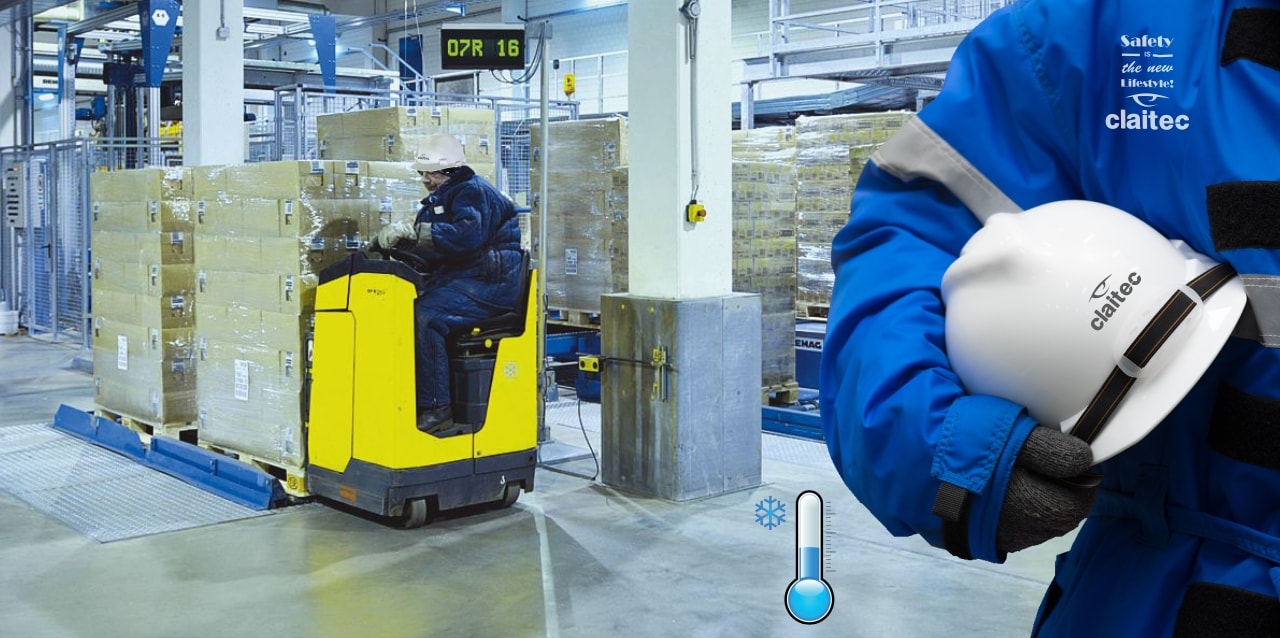
At this time of the year, our workspaces are invaded by an enemy as silent as it is harmful: the cold. Our routines in factories, industries, storage facilities and other similar places are affected by low temperatures, which can become a serious risk to the health of our workers.
In this article we discuss some of the most common questions on this topic and offer five handy suggestion to help beat the low temperatures we must deal with at work:
What are the risks of working in cold environments and their symptoms?
Thermal stress, hypothermia and freezing are the main risks associated with the cold. These tend to threaten workers who perform their tasks in outdoor spaces. The symptoms that can are generally registered with more frequency include: chills, fatigue, loss of coordination, confusion, colic, respiratory problems, allergies, among others.
¿Quiénes pueden verse más afectados ante este tipo de clima?
- Operators of more advanced age, given that their main body defence mechanisms against the cold – such as vasoconstriction and shivering – tend to become weakened with time. This has to do, in many cases, with the loss of their capacity to feel the temperature changes and inadequate adaptation response.
- Workers with chronic diseases are also a population at risk. This group includes people with respiratory insufficiencies, cardiovascular diseases, diabetes, addictions, neuropsychiatric diseases and other types of acute diseases.
- Also vulnerable to this type of climate are people who take certain medications for the treatment of chronic diseases.
What measures can be taken to prevent risks?
You must be committed to take measures that change the factors that affect the thermal balance of the person: be it the activity of the task itself, the temperature of the place, the evaporation of the sweat and the quality of the clothing, among other relevant points.
Apply specific routines to support operators working in such complex conditions. For example: organise and divide the tasks in a way that they become less intense for each worker – you could decrease the level of effort to perform in the coldest hours of the day. You also need to consider the exercise and mobility of all parts of the body and have food and diets adapted to the situation – ingesting hot liquids helps to recover losses of calorific energy.
Provide protective equipment for workers: and offer the necessary clothing for each position and each task.
Follow the weather forecasts regularly: to be clear about the kind of temperatures you can expect and also to learn about experts’ recommendations on the matter.
Pay great attention to the warning signals provided by the human body: look out for symptoms of hypothermia, frostbite or other illnesses or injuries related to the cold.
In summary, it is important to be clear that the low temperatures are not a mere anecdote of each winter working day.
On the contrary, they suppose a drastic change of normal working conditions and can end up putting in serious risk our integrity and that of all the workers that are part of the team.
At Claitec, we work to improve health in work spaces and prevent accidents.
If you want to have more information about our services or if you are looking for advice, please don’t hesitate to contact us.
We are here to help you: https://www.claitec.com/contact/
